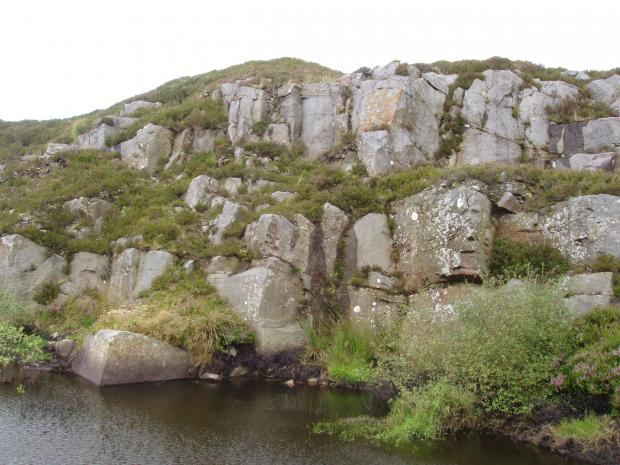
Carnmore is a special place because of its earth science interest. The quarry provides access to a series of Carboniferous sedimentary rocks. The sandstone exposed is the reference site for the Carnmore Sandstone Member.
This site is important because it is the geological reference locality for the Carnmore Sandstone Member, a geological unit within the Meenymore Formation. These rocks are of Carboniferous age, the geological period that lasted from 354 to 290 million years ago. During much of this period, Northern Ireland was covered by fairly shallow tropical waters. Sandstones are one of the more common rocks in the Meenymore Formation; it is however unusual for the sandstone beds to develop into the thick units seen in Carnmore.
The sandstone is a pale grey-brown colour, typically coarse grained with pebbles scattered throughout usually in thin, discontinuous beds.
These rocks are evidence of a large river system being present at that time. The pebbles are derived from older rocks in the wider area and can be used to tell us what type of rocks the river was eroding and where the source may have been. The presence of ripples within the sandstones can also be used as an indicator of what direction the river was flowing.
Related articles
- ASSI Guidance for Public Bodies/Competent Authorities
- Coastal Areas of Special Scientific Interest
- Conservation Management Plans (CMPs)
- European Marine Sites - Marine Special Areas of Conservation and Special Protection Areas
- Introduction to Conservation Management Plans (CMPs) for Northern Ireland’s Special Areas of Conservation
- Marine Conservation Zones
- Marine Protected Areas
- Marine Ramsar sites
- Portrush Coastal Zone
- Special Areas of Conservation
- Special Areas of Conservation for Harbour porpoise
- Special Protection Areas
